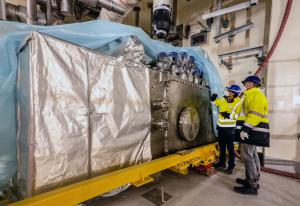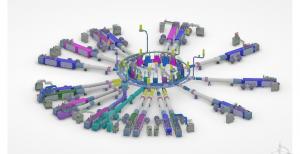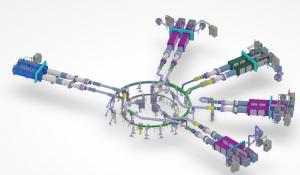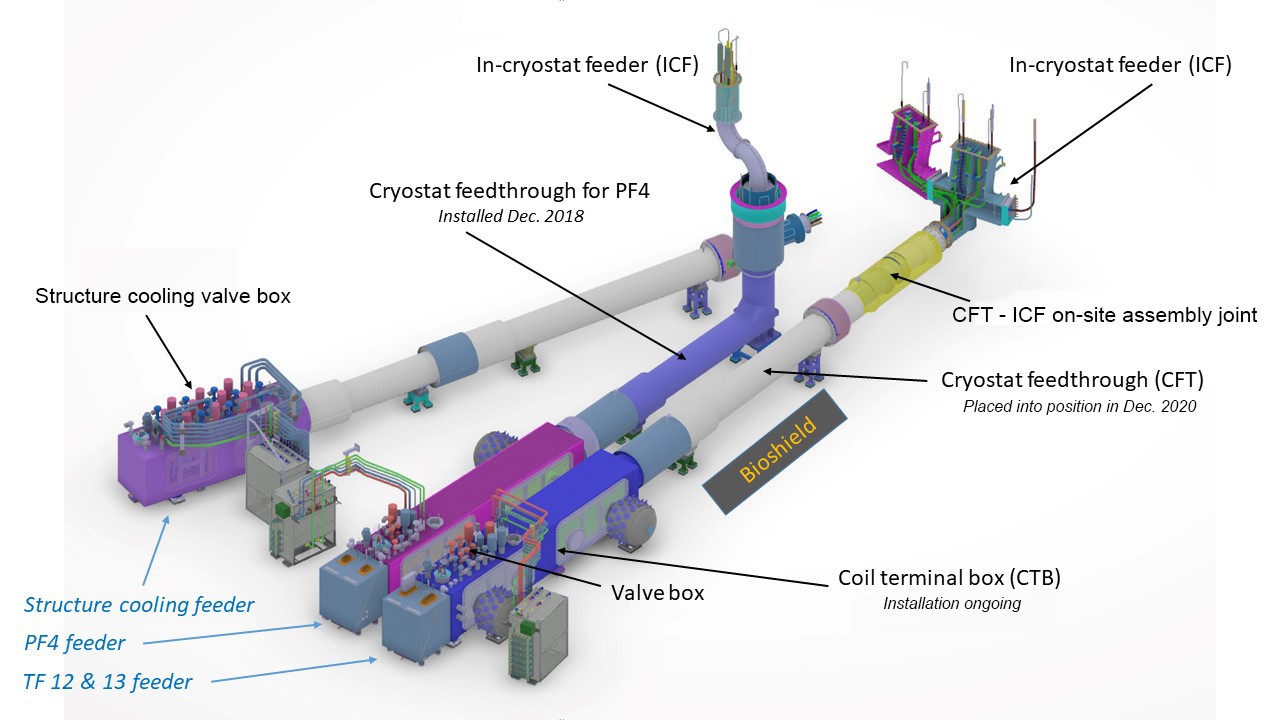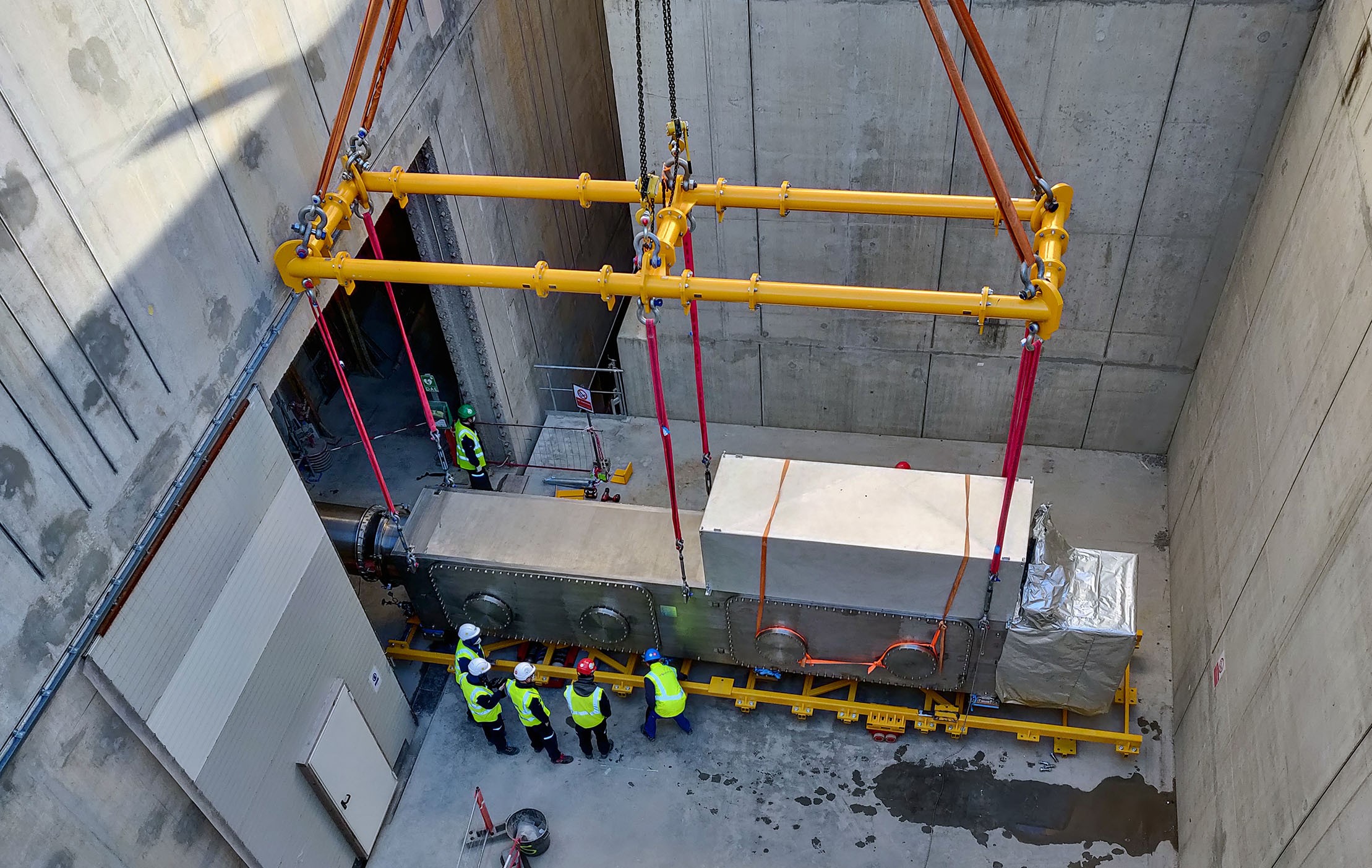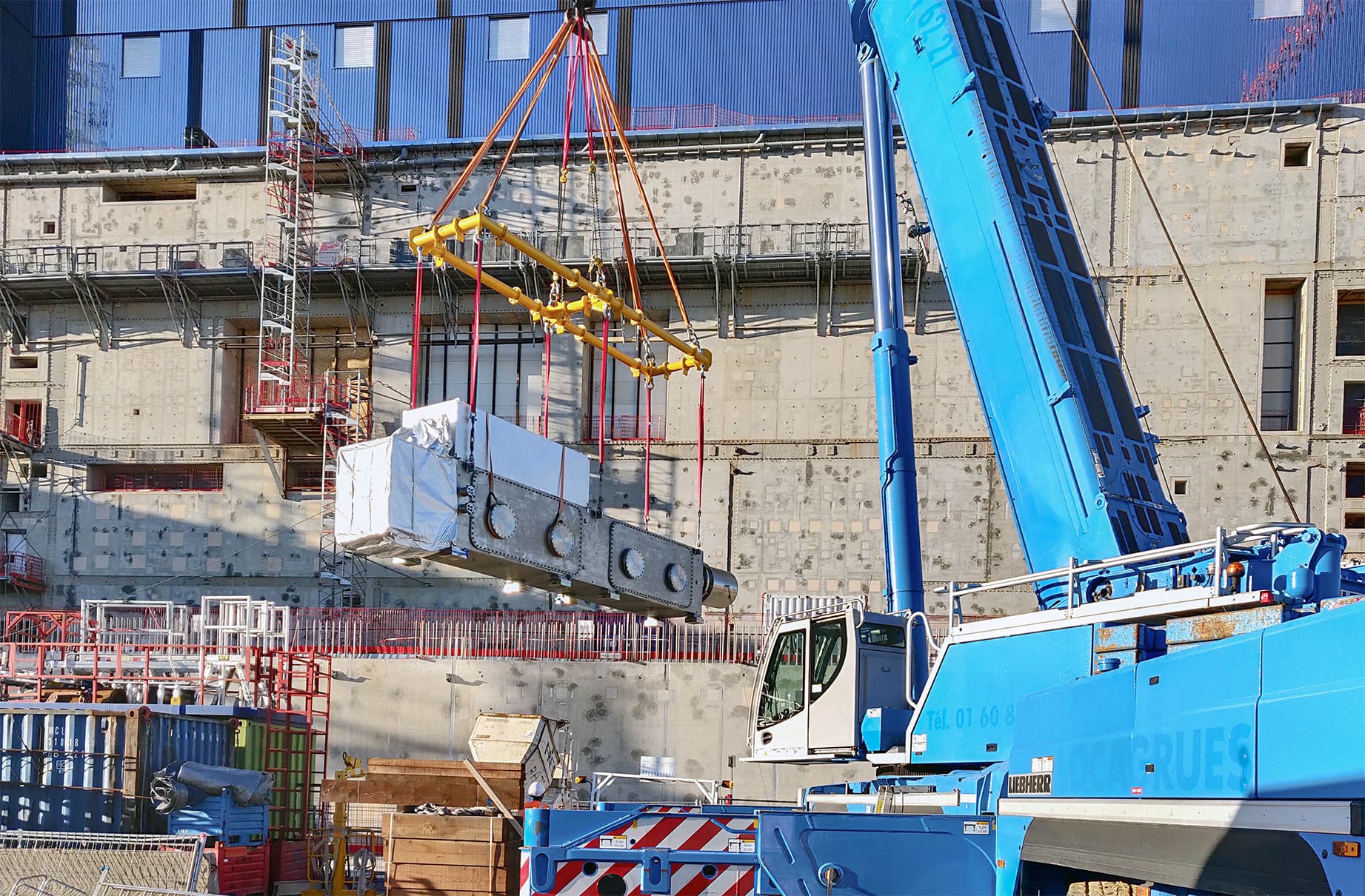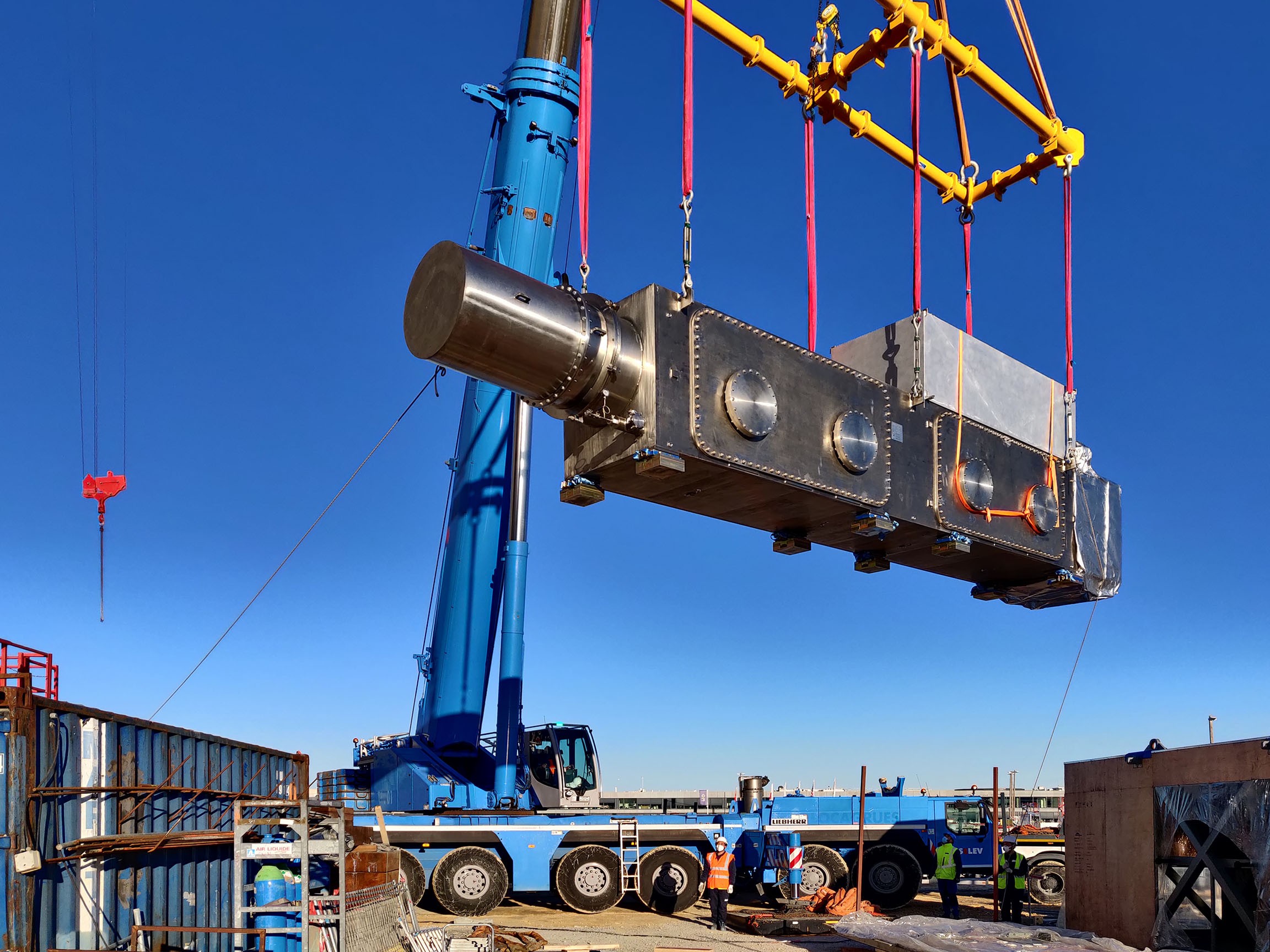Des autoroutes à plusieurs voies
Les bobines supraconductrices d'ITER se contentent d'un régime simple à base d'électricité et de fluides cryogéniques. Sur site, l'infrastructure industrielle est conçue pour fournir les deux en abondance, mais toute la difficulté réside dans leur transport. Comment « nourrir » 10 000 tonnes d'aimants répartis entre des dizaines de composants individuels dans l'environnement encombré de la machine ? Réponse : en utilisant des feeders (ou « lignes d'alimentation »).
De l'extérieur, une ligne d'alimentation ressemble à une grande boîte rectangulaire d'où émerge un gros tuyau dont la section diminue progressivement en se rapprochant du centre de la machine. Disposées en cercle aux niveaux supérieur et inférieur du tokamak, les 31 lignes d'alimentation des bobines* ressemblent à des seringues géantes toutes dirigées vers le même point.
Les boîtes des lignes d'alimentation étant placées à l'extérieur de la machine, dans les galeries du Bâtiment tokamak, et les tuyaux traversant d'abord le bouclier de protection biologique puis le cryostat, il est impossible, sinon grâce aux plans, d'avoir une vue d'ensemble du système. De même, l'aspect extérieur de chaque ligne d'alimentation ne laisse rien deviner de l'extrême complexité qu'elle renferme : les lignes d'alimentation des bobines figurent parmi les composants les plus sophistiqués du tokamak, mais également parmi les plus stratégiques—les feeders sont la ligne de vie du système magnétique d'ITER tout entier.
Quelle que soit la bobine à laquelle elle est connectée, une ligne d'alimentation se compose de trois éléments principaux : une boîte de terminaison, une pénétration passant au travers du cryostat et un dernier élément, directement connecté à la bobine. Une fois assemblés, ces segments forment un système de 30 à 50 mètres de long, allant des galeries jusqu'au cœur de la machine.
La complexité intérieure défie toute description : des jeux de barres transportant le courant électrique courent parallèlement à la tuyauterie qui distribue et récupère les fluides cryogéniques à différentes températures, chaque circuit étant soigneusement isolé par des conduits sous vide et des boucliers thermiques activement refroidis. Cette autoroute à plusieurs voies accueille également les câbles et les équipements de l'instrumentation haute et basse tensions.
Fourni par la Chine et fabriqué à l'Institut de physique des plasmas de l'Académie des sciences chinoise (ASIPP), chaque segment de ligne d'alimentation est livré à ITER entièrement équipé et prêt à être assemblé après inspection et essais sur site. Au total, cette contribution représente 1 600 tonnes d'équipements divers, dont 93 grands éléments et leurs auxiliaires.
Il y a un peu plus de deux ans, au mois de décembre 2018, un premier élément de ligne d'alimentation était installé dans le puits d'assemblage. Conçue pour desservir la bobine de champ poloïdal n° 4, l'un des plus grands aimants annulaires de la machine, la pénétration « captive » devait être mise en place avant l'achèvement de la couronne d'appui de la base du cryostat.
Au cours d'une opération aussi délicate que spectaculaire, l'élément coudé, long de 8 mètres, haut de 4,5 mètres et pesant 7,5 tonnes a été introduit dans la fosse au travers d'une des ouvertures de la couverture temporaire du bouclier de protection biologique, avant d'être inséré dans l'étroite ouverture ménagée à cet effet dans la couronne de béton.
Au mois de décembre 2020, la pénétration de la ligne d'alimentation des bobines toroïdales n° 12 et n° 13 était installée à l'emplacement prévu. Un mois plus tard, la boîte de terminaison correspondante était mise en place dans la galerie, au niveau le plus profond (B2) du Bâtiment tokamak. Cette fois, c'est par une large ouverture du Bâtiment tritium que cette pièce particulièrement massive a pénétré dans le Bâtiment tokamak pour être positionnée sur un châssis mobile et rejoindre sa destination.
Les trois segments de lignes d'alimentation aujourd'hui en place dans le Bâtiment tokamak ne représentent qu'une fraction de l'ensemble du système.
À mesure de leur livraison par la Chine, les lignes seront installées dans le sens des aiguilles d'une montre, d'abord au niveau inférieur B2, où 21 lignes d'alimentation sont prévues, puis au niveau supérieur L3 avec les 10 lignes restantes.
L'équipe responsable des lignes d'alimentation a désormais défini un solide plan d'installation et le met en œuvre conformément au calendrier. Prochaine étape : le positionnement de la boîte de terminaison de la bobine n° 4, parallèlement à celle récemment installée ; suivi de l'installation de la pénétration et de la « boîte froide » d'une des trois lignes d'alimentation exclusivement consacrées au refroidissement des structures des bobines.
* Parmi les 31 lignes d'alimentation qui seront installées (21 au sous-sol, 10 au niveau supérieur), deux seront exclusivement consacrées à l'instrumentation et trois au refroidissement des structures des bobines. Toutes les autres lignes serviront à l'alimentation des aimants en électricité et en fluides cryogéniques.

